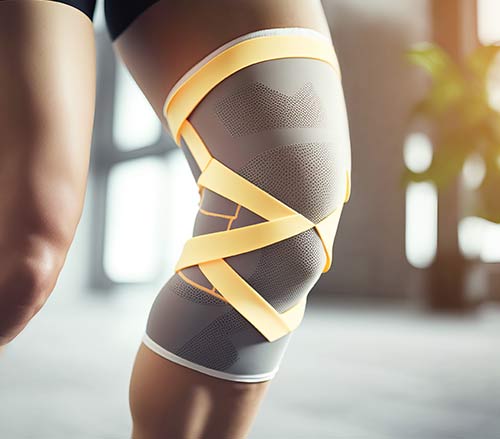Navigating the Crucial Path: A Comprehensive Guide to the First 6 Weeks of Post-Operative ACL Reconstruction
For athletes or anyone engaging in high-impact activities, an anterior cruciate ligament (ACL) tear can feel like a devastating blow. Yet, with advancements in surgical techniques and meticulous post-operative rehabilitation, a full return to pre-injury levels of function is not only possible but achievable. The initial six weeks following ACL reconstruction surgery are paramount in laying the foundation for a successful recovery journey. This blog delves into the intricacies of this crucial phase, exploring key milestones, therapeutic interventions, and essential advice for optimal healing.
Understanding the Early Landscape:
Your content goes here. Edit or remove this text inline or in the module Content settings. You can also style every aspect of this content in the module Design settings and even apply custom CSS to this text in the module Advanced settings.
The immediate aftermath of ACL surgery is characterised by inflammation, pain, and restricted range of motion. The graft, responsible for stabilising the knee joint, is in its nascent stage, requiring careful protection and meticulous rehabilitation. During these crucial weeks, the primary goals of therapy are:

- Minimizing swelling and pain: Cryotherapy, compression garments, and elevation are non-invasive means to manage inflammation and discomfort
- Restoring range of motion: Gentle, progressive exercises focusing on knee extension and flexion regain pre-injury mobility
- Knee extension and flexion exercises after ACL surgery
- Preventing stiffness and blood clots: Early mobilisation exercises, including isometric contractions and light ankle pumps, promote circulation and combat stiffness
- Initiating quadriceps activation: Regaining quadriceps strength is crucial for preventing muscle atrophy and ensuring proper knee function. Electrical stimulation and isometric exercises can jumpstart this process
- Quadriceps activation exercises after ACL surgery
The Therapeutic Toolkit:
A multi-faceted approach is key to facilitating optimal healing during this critical period. Physical therapy plays a central role, with a combination of modalities employed to address specific goals:
- Exercise therapy: Tailored exercises, gradually increasing in complexity, target range of motion, quadriceps activation, and proprioception (awareness of joint position)
- Manual therapy: Techniques like massage and mobilization can help reduce pain, improve joint mobility, and address scar tissue formation
- Modalities: Cryotherapy, ultrasound, and electrical stimulation can manage pain and inflammation, while promoting tissue healing
Navigating the Home Stretch:
As the weeks progress, focus shifts towards strengthening exercises with an emphasis on the quadriceps, hamstrings, and glutes. Proprioceptive training, incorporating balance and agility drills, is crucial for regaining neuromuscular control and confidence. By the end of the sixth week, patients should be able to achieve full knee extension, with good flexion approaching 90 degrees. Walking without crutches and resuming basic daily activities becomes increasingly feasible.
Beyond the Exercises: Essential Advice for Success:
While diligent adherence to prescribed exercises is vital, holistic self-care plays an equally important role in accelerating recovery:
- Pain Management: Medication prescribed by your doctor or physiotherapist can help manage pain and discomfort, allowing for better participation in therapy.
- Nutrition: A balanced diet rich in protein, calcium, and vitamin C is essential for tissue healing and optimal recovery.
- Rest and Sleep: Prioritizing adequate sleep and rest allows the body to focus on repair and regeneration.
- Mental Resilience: The recovery process can be challenging both physically and emotionally. Maintaining a positive attitude, setting realistic goals, and celebrating small victories can help stay motivated.

A Stepping Stone on the Road to Recovery:
The first six weeks after ACL reconstruction surgery are a critical juncture in the rehabilitation journey. By understanding the underlying biological processes, actively engaging in prescribed therapy, and adopting healthy lifestyle practices, individuals can lay the groundwork for a successful and complete recovery. Remember, consistent effort, patience, and a collaborative approach with your healthcare team are key to reclaiming your pre-injury level of function and returning to the activities you love.
This blog post provides a general overview of the first six weeks post-operative ACL reconstruction. It is crucial to remember that individual recovery timelines and protocols may vary based on the severity of the injury, surgical technique, and personal factors. Always consult with your doctor or physical therapist for personalized guidance and ensure adherence to their prescribed program for optimal results.


